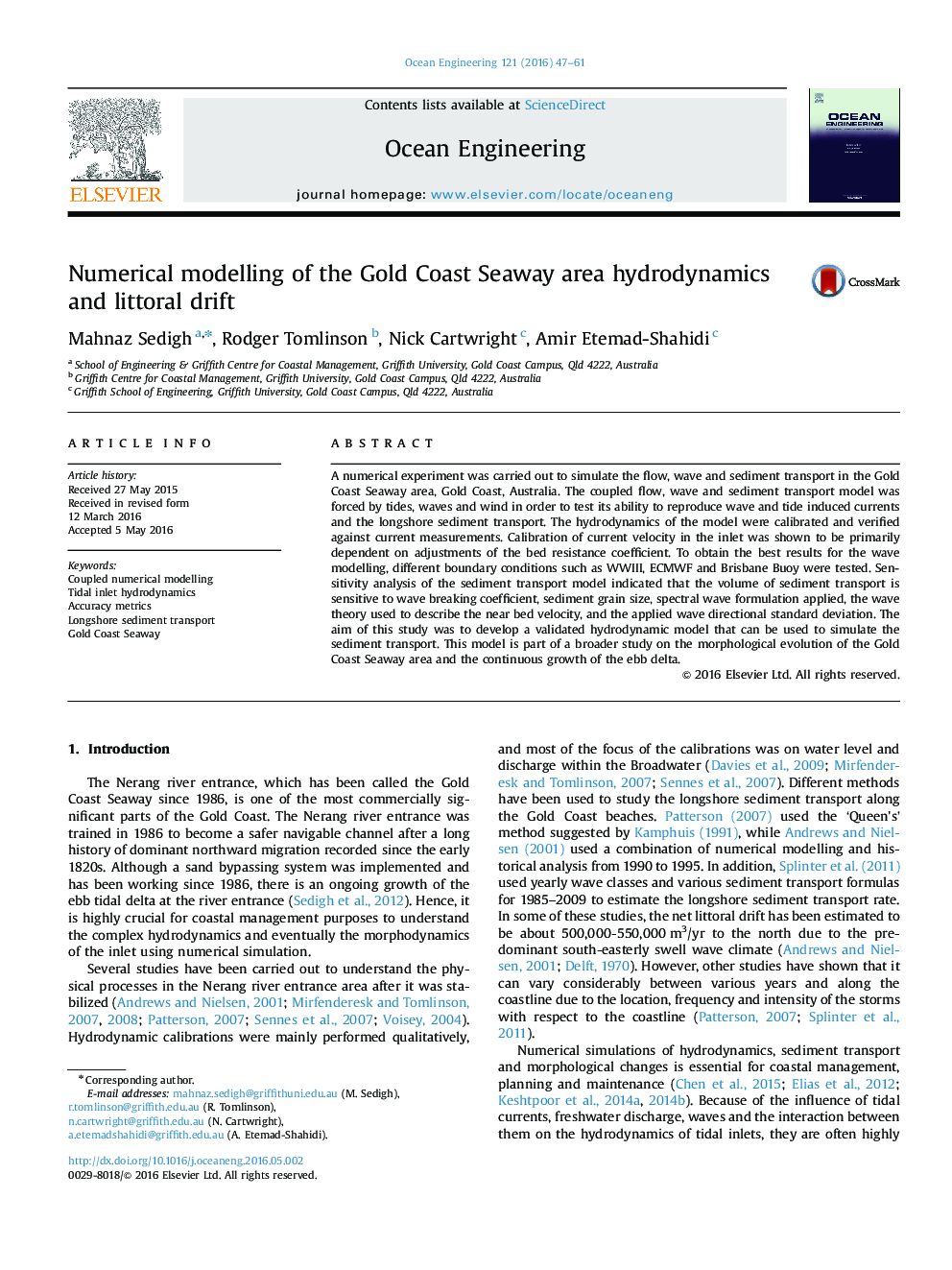| Article ID | Journal | Published Year | Pages | File Type |
|---|---|---|---|---|
| 8064264 | Ocean Engineering | 2016 | 15 Pages |
Abstract
A numerical experiment was carried out to simulate the flow, wave and sediment transport in the Gold Coast Seaway area, Gold Coast, Australia. The coupled flow, wave and sediment transport model was forced by tides, waves and wind in order to test its ability to reproduce wave and tide induced currents and the longshore sediment transport. The hydrodynamics of the model were calibrated and verified against current measurements. Calibration of current velocity in the inlet was shown to be primarily dependent on adjustments of the bed resistance coefficient. To obtain the best results for the wave modelling, different boundary conditions such as WWIII, ECMWF and Brisbane Buoy were tested. Sensitivity analysis of the sediment transport model indicated that the volume of sediment transport is sensitive to wave breaking coefficient, sediment grain size, spectral wave formulation applied, the wave theory used to describe the near bed velocity, and the applied wave directional standard deviation. The aim of this study was to develop a validated hydrodynamic model that can be used to simulate the sediment transport. This model is part of a broader study on the morphological evolution of the Gold Coast Seaway area and the continuous growth of the ebb delta.
Keywords
Related Topics
Physical Sciences and Engineering
Engineering
Ocean Engineering
Authors
Mahnaz Sedigh, Rodger Tomlinson, Nick Cartwright, Amir Etemad-Shahidi,
